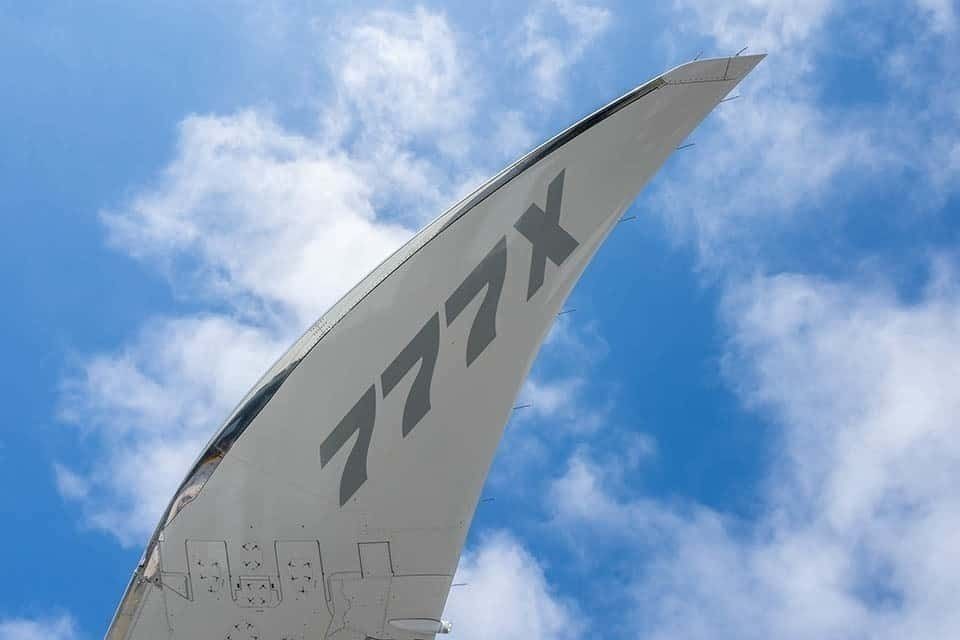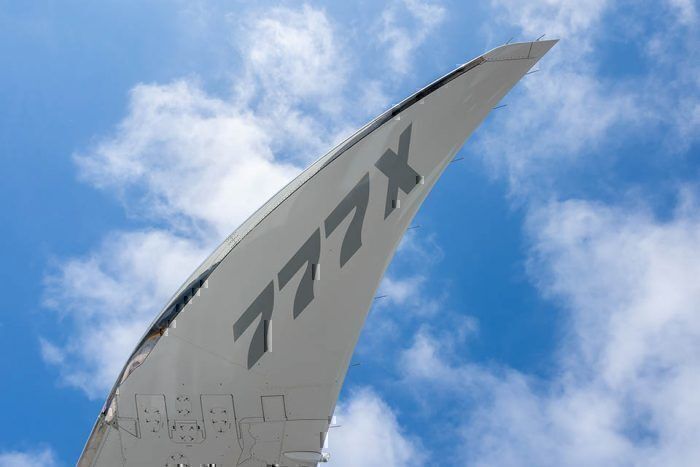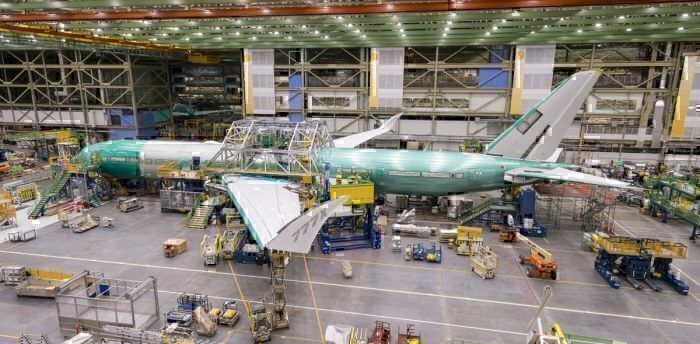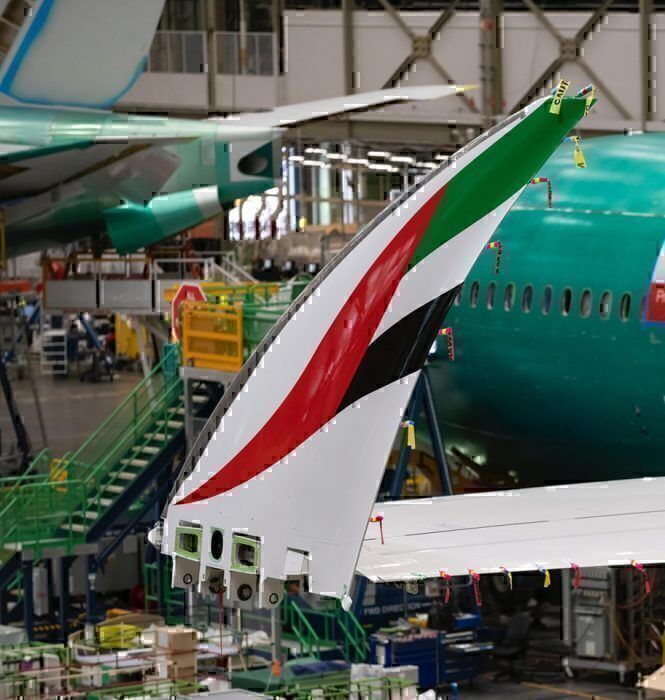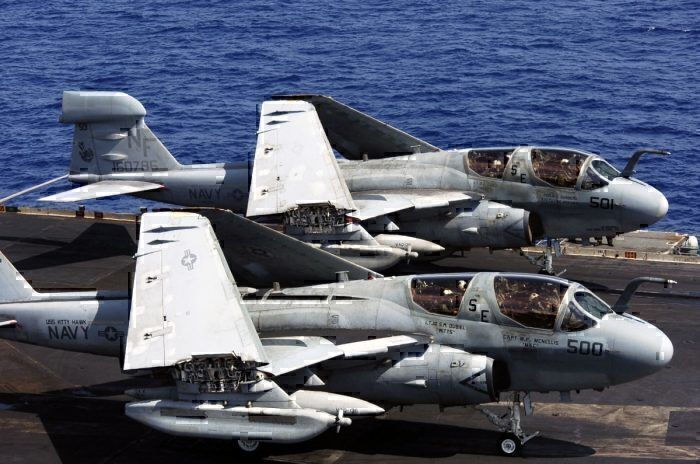One of the most notable and unique features of the Boeing 777X is its folding wingtips. Since the concept first emerged as a design feature of the new aircraft, the world has been eagerly waiting to see what they’re all about. But why did the 777X need folding wingtips, and what’s the benefit of having them?
More efficient wings
Boeing describes the wings of the 777X as having an ‘optimized span’. In plain English, this means that it’s bigger, and therefore more efficient. Folded out, the huge size of the 777X’s wings translates to a marked improvement in fuel burn, something which all airlines are always keen to achieve.
So that explains why Boeing wanted to make the wings so huge in the first place, but not why they have to fold.
Able to fit into more airports and stands
The main reason for the wingtips’ mechanical folding feature is to allow the aircraft to land at more airports. The FAA’s Airplane Design Group (ADG) categorization ranks aircraft from Group I (the smallest) to Group VI (containing the Airbus A380, for example). Boeing was keen to keep the 777X in Group V, the same group as the 777 classic.
The reason for this is simple. Group VI aircraft are severely limited in terms of the number of airports they can land at. In a recent interview with Hi Fly’s CEO, Dr Paulo Mirpuri, he told us how Hi Fly had been put off investing in additional A380s due to the lack of airports set up to handle the type. Putting the 777X in group VI (with a wingspan of 214’ – 262’) would have given its operators the same headache as Hi Fly, and narrowed their choice of routes and airports significantly.
The ADG categorizes Group V aircraft as having a wingspan of between 171’ and 214’. Extended, the wingspan of the 777X is 235’ 5”, more than 20’ longer than the maximum for Group V. By making the wingtips foldable, the 777X’s on ground wingspan is reduced to 212’ 8”, well within the parameters for Group V.
This makes it capable of landing at a far greater range of airports, thereby allowing operators of the type to be more flexible with the routes and destinations it is deployed on.
Consistency with previous generations
As the folding wingtips of the new 777X make it able to fit into regular widebody airports and stands, it means it has a footprint that is consistent with that of the previous generation. With the wingtips folded, the profile of the 777X is roughly the same as the 777 classic during taxi and gate operations.
This means that, not only can operators of the new 777X utilize the same airports that they serve with their 777 classics, they can also swap and change the two aircraft types as the need arises. This makes the aircraft a far more attractive purchase prospect than one which would require bespoke route and airport planning.
Not entirely a new idea
Folding wingtips are nothing new; in fact, they’ve been in use by military aircraft since WWII. However, this is the first time they’ve been used on a widebody commercial aircraft. Boeing did, in fact, offer large folding wingtips on the 777 when it was first launched, in order for it to fit at smaller gates, however, no airlines purchased this option.
The reason the folding wingtip never took off in the past was that Boeing had proposed to fold up around 21’ of the wing. This large section of wing required complex hydraulics in order to operate, making the mechanism heavy, expensive and a burden for maintenance.
The folding wingtips of the 777X are not offered as an add-on; they’re all included in the price. Added to this, Boeing is now only folding away around 11’ of the wing, which requires a much lighter and less complicated system to operate.
Are you excited to fly the new 777X? Let us know in the comments.

